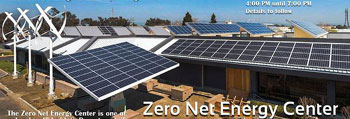In 2009, the American Institute of Architects launched AIA 2030, where firms voluntarily commit to design net-zero energy buildings by 2030 – so, how’s it going?
291 architectural firms have signed onto AIA 2030 and there’s momentum toward the goal, according to the 2013 progress report.
The report begins this way: "High-performance buildings have gone beyond rhetoric and research-backed experiments to standard practice." AMEN.
One thing that’s become clear is the importance of energy modeling during the design phase – it must become standard practice to reach the net-zero energy goal. 66% of firms now use energy modeling to predict operational energy consumption – up 14% from 2012.
"Evaluating how a project will use energy early and throughout the design process can have a profound impact on carbon reduction in the built environment," the report says.
The good news is that last year, 400 design projects lowered carbon emissions 60% – a 200% increase from 2012 – and that’s across buildings of all sizes. Net-zero energy projects rose five-fold to 73 projects in 2013.
An important policy underlying the growth is the growing list of cities that require building owners to disclose energy use.
Electricians receive training in net-zero energy buildings in San Leandro, California:

Improvements in building efficiency can cut US emissions 34% – "the key to successfully addressing the economy, climate change and energy independence," says Ed Mazria, Executive Director of Architecture 2030.
To help more firms report on this data, AIA and the Department of Energy are launching the 2030 Design Data Exchange. There, architects will be able to more easily enter data and anonymously compare their project performance with those in the AIA 2030 Commitment portfolio. The tool comes online late this year or early next year. A preview is here.
In August, architects around the world unanimously adopted the "2050 Imperative," which commits them to 100% net-zero energy design and construction by then.
Net-zero energy buildings can now be found in situations that range from schools to residential communities and even stadiums.
California and the EU have passed laws requiring net-zero buildings.
Read our articles, Net-Zero Energy Buildings Double, Going Mainstream and Net-Zero Buildings: Inexpensive Next Step From LEED-Platinum.
2030 Commitment 2013 Progress Report:
